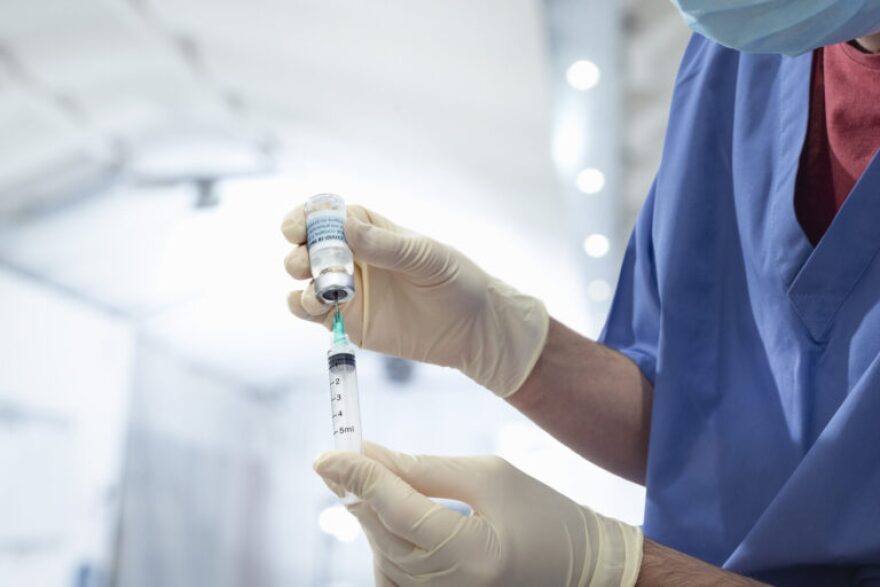The “vast majority” of Kentucky’s COVID-19 cases are now the variant EG.5 – also known as “Eris” – according to Louisville infectious disease expert Dr. Mark Burns.
This variant is “slightly more contagious … but overall not very different from the original omicron” strain, Burns told press Wednesday.
EG.5 is an omicron descendant, according to Yale Medicine.
EG.5 symptoms are “essentially the same” as those of other strands: fever, chills and other flu-like symptoms, according to Burns, who is also an associate professor of medicine with the University of Louisville.

The strain accounted for a fifth of cases around the United States, according to Centers for Disease Control and Prevention surveillance as of Aug. 19.
State data shows an increase in cases over the last few weeks, particularly among young children ages 0-4.
That’s thanks in part, Burns said, to a small “summer spike.” More folks have traveled recently, he said, and also congregated indoors during extreme heat.
Additionally, Burns said, people who last got a COVID-19 vaccine in the fall of 2022 are seeing waning protection. They should, he said, plan to get the new shot expected mid-September, which was designed to target omicron and its mutations.
“Overall, we’re still in a good place,” Burns said. “It’s much better now than it would have been in previous years.”
Still, folks should take their own risk factors into consideration when in a crowded, indoor space, Burns said.
“People who are elderly, people who are immunocompromised: If you’re going to be in a situation where there’s not good ventilation, then it might be wise for them to mask up,” he said.
COVID ‘here to stay’
More than 19,000 Kentuckians have died with COVID-19 since it hit Kentucky in March 2020. As of Aug. 21, 58% of Kentuckians were fully vaccinated against the virus.
UofL Health had seven patients hospitalized with – not necessarily because of – COVID-19 as of Wednesday, a spokeswoman said. The system had no patients in intensive care and none on ventilators.
“The COVID virus, unfortunately, is one that we’re going to have to live with, but is no longer in the pandemic stage,” Burns said. “It looks like it’s going to be here to stay for a while and we will attack it just like we would influenza.”
There will “hopefully” be yearly vaccine updates, too, he said. That way, “just like you get your flu vaccine, you get your COVID vaccine as well.”
This story was originally published by the Kentucky Lantern.





